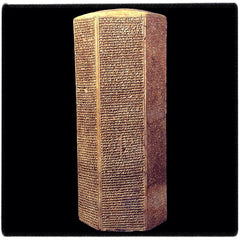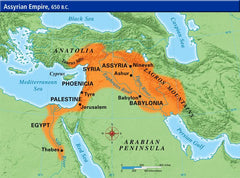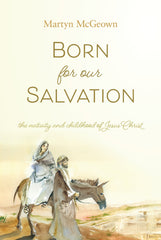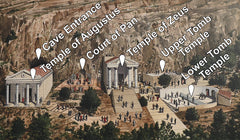Your cart is empty now.

Four Contradictory Resurrection Accounts?
Recently, an atheist skeptic in the local newspaper issued a challenge: produce from the four gospels a "coherent narrative or chronology of events for Easter Sunday." My response, which will have to be drastically reduced for publication in the local press, is as follows.
First, Jesus rose from the dead (no one witnessed the actual event, because it happened inside the tomb), which event was accompanied by an earthquake, the descent of the angel, the rolling away of the stone, and the fleeing of the guards (Matt. 28:2-4, 11-15). Second, a group of women approached the tomb, one of which was Mary Magdalene (Matt. 28:1, 5; Mark 16:1-3; Luke 23:55, 24:1-10; John 20:1). Third, of that group of women, Mary Magdalene, alarmed at the absence of the stone, and fearing the worst, fled to warn the disciples (John 20:2), meeting Peter and John. Fourth, in the meantime, the other women continued to the tomb, which they found empty (Matt. 28:5; Mark 16:4-5; Luke 24:1-3). These women, informed by the angels of Christ’s resurrection, returned to inform the disciples (Matt. 28:8). Fifth, Peter and John arrived at the tomb next, and seeing the grave clothes, they returned to their homes without seeing Jesus or any angels (John 20:3-10). Sixth, Mary Magdalene returned to the tomb, saw the angels, and met the risen Lord in the garden, who commanded her to bring word to his disciples (John 20:11-18; Mark 16:9). Seventh, the other women, who were on the way to tell the disciples, encountered the Lord Jesus, whom they worshipped (Matt. 28:9). Eighth, Jesus appeared to Simon Peter, a meeting which is not further described in the gospel accounts (Luke 24:34; I Cor. 15:5). Ninth, Jesus appeared to the men on the road to Emmaus, one of whom was called Cleopas (Luke 24:13-35; Mark 16:12-13), who then hurried back to Jerusalem to inform the disciples. Tenth, Jesus appeared that same evening to the other disciples, who were invited to touch him to verify his bodily resurrection (Mark 16:14; Luke 24:36-43; John 20:19-23). Eleventh, Jesus appeared again to the disciples and especially to Thomas, who had been absent on the previous occasion (John 20:24-29). There are additional appearances of Jesus recorded in John 21 and mentioned in I Corinthians 15:5-8, but that summary should suffice.
In addition, I would like to address the very premise of the sceptic's challenge. When the Bible contains two or more accounts of an event, they vary according to the purpose and emphasis of the narrative. Those variations are not contradictions. A few examples will illustrate this.
If John mentions only Mary Magdalene, it is not because she was alone, but because he wants to focus on her. Notice that John does not write, "Only Mary Magdalene..." He mentions only her. There is a difference. John describes the experiences of Mary Magdalene at length, which the others summarize in fewer words and with fewer details. Therefore, to mention the other women would distract from his (and the Holy Spirit's) purpose.
If Luke mentions Peter at the tomb without mentioning John, it is because he wants to focus on Peter (Luke 24:12; John 20:4). Notice that Luke does not write, "Peter went and John was definitely not there." He simply does not mention John. Again, that is not a contradiction.
If Matthew mentions only one angel, he is not denying that there were two, but is more interested in what the angel did and said than in the precise number of angels. Matthew does not write, "And behold only one angel descended." He simply determined to focus on one angel, the more prominent of the angels, or the spokesman of the angels, or the angel of the Lord.
Accounts of events can vary without being contradictory, as multitudes of everyday examples illustrate. If I went to an event at which my friends John, Mary, James, and Margaret were present, and I said, “John was there,” but did not mention the others, I would be giving an incomplete account, but not a false account. (I was interested primarily in John, so I mentioned him to the exclusion of others). If another person was at that event, and he said, “John and Margaret were there, and they make a lovely couple,” his account complements and completes mine, but it does not contradict it. If a third person mentioned that James and Mary were there (without mentioning John and Margaret), my friend could, by comparing the three accounts, determine that John, Mary, James and Margaret were present. Only if I had said, “John was there alone, without Margaret” or “James and Mary were definitely not there,” would I be contradicting another person’s account. Even if I had said, “John was there, but I do not recall seeing Margaret,” I would not contradict my friend’s account of the event.
With four gospel accounts, we do not expect exact carbon copies. Otherwise, the Holy Spirit would not have inspired four accounts. Each one has a different emphasis and beautifully complements and completes (and does not contradict) the others, as the church has always recognized.
Striking about all of this is, first, that none of the disciples expected the resurrection to take place. The women had come to anoint a dead body. Mary Magdalene was upset at not finding a dead body. And, second, the disciples were very reluctant to believe the accounts of the women, and Thomas himself would not believe before he saw the resurrected Lord. The disciples were not gullible, suggestible fools. They were convinced only after seeing Jesus, and they were willing to die for their convictions rather than change their testimony. We have their testimony in Scripture today, which we must believe, for they were eyewitnesses of these wonderful events.
Listen to the testimony of John:
Jesus saith unto him, Thomas, because thou hast seen me, thou hast believed: blessed are they that have not seen, and yet have believed. And many other signs truly did Jesus in the presence of his disciples, which are not written in this book. But these are written, that ye might believe that Jesus is the Christ, the Son of God; and that believing ye might have life through his name” (John 20:29-31).
____________________
This post was written by Rev. Martyn McGeown, missionary-pastor of the Covenant Protestant Reformed Church in Northern Ireland stationed in Limerick, Republic of Ireland.
The content of the article above is the sole responsibility of the article author. This article does not necessarily reflect the opinions and beliefs of the Reformed Free Publishing staff or Association, and the article author does not speak for the RFPA.

Donate
Your contributions make it possible for us to reach Christians in more markets and more lands around the world than ever before.
Select Frequency
Enter Amount










